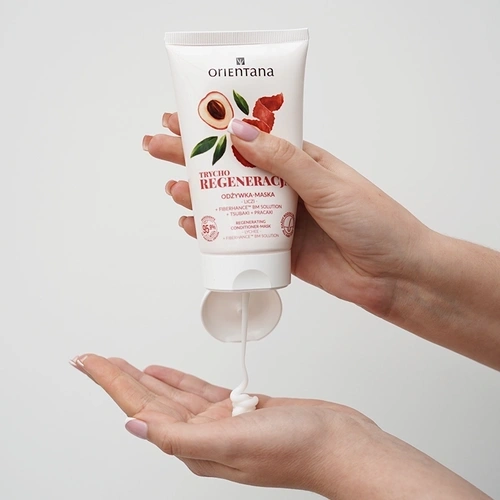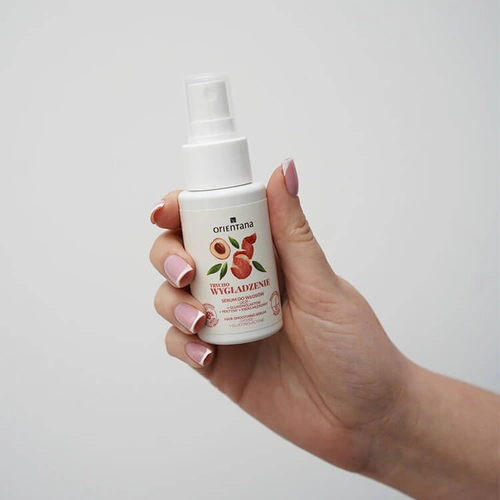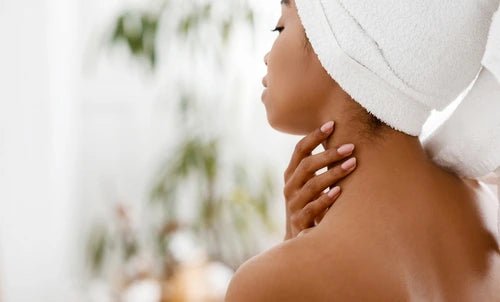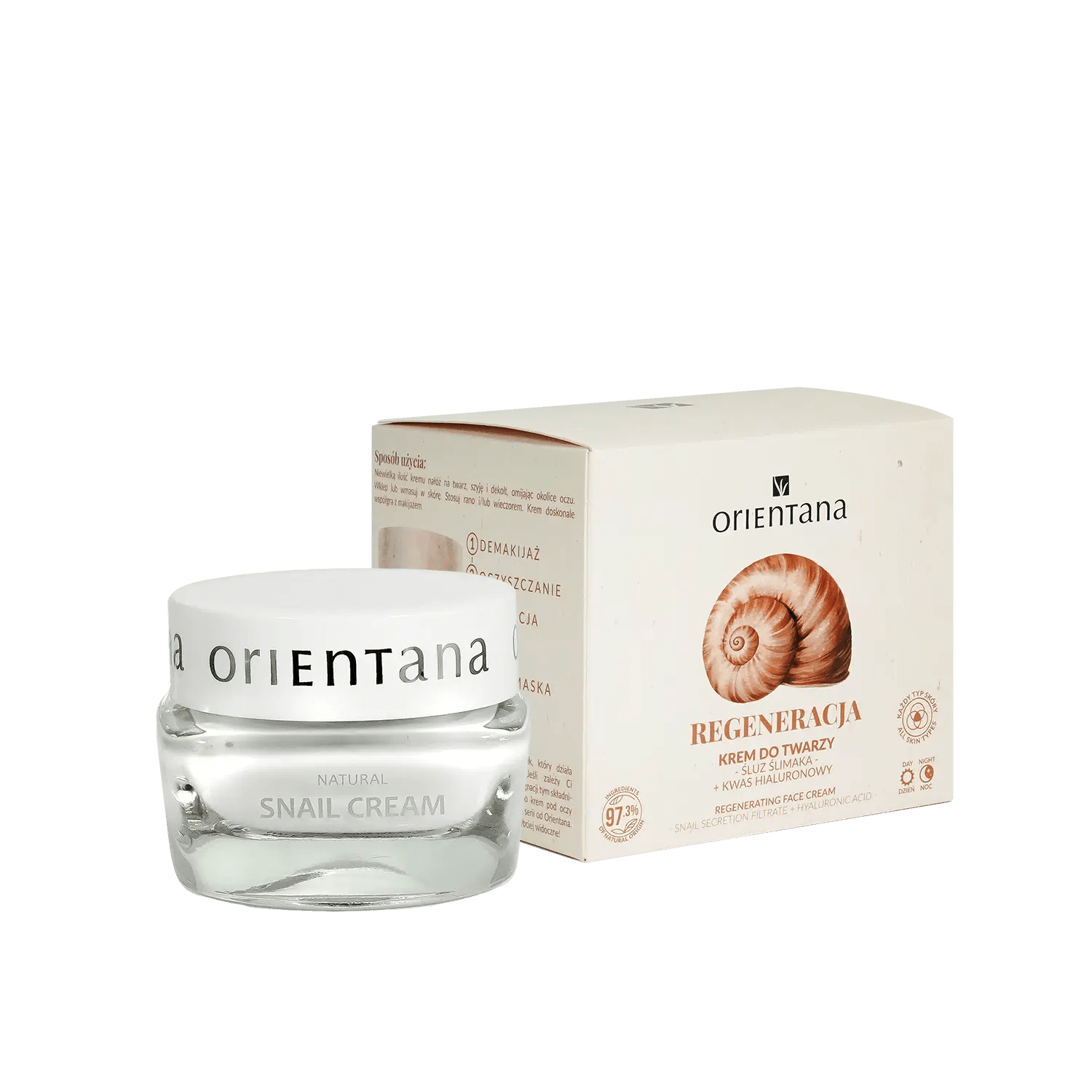Drying your hair is an automatic activity for many of us – we get out of the shower, grab a towel, then a hair dryer, a few quick movements and that’s it. But have you ever wondered how it really affects the condition of your hair? It turns out that the way we dry our hair has a huge impact on its appearance, health and resistance to damage.
Unfortunately, we very often make mistakes that result in dryness, brittleness, frizz or even excessive hair loss. Rubbing with a towel, too hot air, drying too quickly, without heat protection - these are just some of the "deadly sins" that can ruin the effects of even the best care.
Luckily, all it takes is a few simple changes to your routine to see a real difference. In this article, I’ll show you how to dry your hair step by step – safely, consciously, and without the risk of damaging it. Because beautiful hair isn’t just about cosmetics, it’s about everyday habits. Ready? Let’s get started!
Preparing your hair for drying
Before you even reach for the dryer, it's worth taking care of how you treat your hair right after washing it. This is when it's most susceptible to damage - wet strands are more flexible, delicate and unfortunately... much easier to break.
Step one? Forget about vigorously rubbing your hair with a towel – it may seem quick and convenient, but it works like sandpaper for your strands. Instead, gently squeeze out excess water with a soft towel, preferably microfiber or cotton. It's a small change that makes a big difference. If you don't have a suitable towel, you can use an old cotton T-shirt to blot water from your hair.

Another thing is combing. Do you know that feeling when the brush stops and you pull until something “snaps”? Exactly – it’s better to avoid that. Use a wide-toothed comb or a special brush for wet hair. Start at the ends and gradually work your way up. No tugging, no nerves, no loss of volume.
If your hair is difficult to comb, don't try to defeat it, but it's time to reach for the right cosmetics. After washing your hair with shampoo, you can use the Trcho Lychee conditioner, which will work in 60 seconds and, among other things, make your hair perfectly combable. It does not contain silicones but natural ingredients, including a complex that strengthens hair fibers from the inside. You can also reach for the Trycho Lychee Hair Serum, which smoothes and disciplines your hair, and when applied to wet hair, it will make combing easier.
Combing your hair can be done before or after blow-drying, depending on your hair type and the purpose of your care.
Dry hair combing
Dry hair combing is a solution that has its loyal group of supporters - and for good reason. Dry hair is less susceptible to stretching and mechanical damage than wet hair, which makes this method of combing safer, especially if done gently and with the right tools. This is an ideal method especially for those with straight or slightly wavy hair - then the brush glides easily through the strands, and combing becomes a pleasure, not a struggle.

It is worth remembering that even when combing dry, it is worth supporting yourself with appropriate cosmetics - e.g. Trycho Lychee serum, which facilitates combing. Thanks to it, the brush will glide even more smoothly, and the hair will gain additional protection and shine. You can also choose a brush tailored to your needs - a classic one with natural bristles, a flat paddle brush or a model with flexible teeth, which copes great with knots without pulling the hair out.
Combing wet hair
Wet combing is a method especially recommended for those with curly, wavy or very thick hair. In such cases, dry combing often results in frizz, breakage or even loss of natural curl. That is why detangling the locks right after washing can help maintain their structure, elasticity and natural shape.
It is worth remembering, however, that wet hair is much more susceptible to mechanical damage. Therefore, gentleness is absolutely key - it is best to wait a moment after washing until the hair dries slightly (it is damp, not completely wet) before starting to comb it. This will minimize the risk of stretching and breakage.
To make this process easier, it is good to apply a leave-in conditioner, a Trycho LICHI serum that helps to detangle, or even a moisturizing mask if the hair is particularly tangled or demanding. Such products soften the strands, add slip and make combing not require force – just a few calm movements.
Choosing the right tool is just as important as cosmetics. Wide-toothed combs or brushes designed specifically for wet hair are best – with flexible, soft bristles that don’t tug or pull. Always start from the ends, gently moving upwards – this is the safest technique for our strands.
Now, smoothly moving on to blow-drying, before you turn on the dryer, reach for a heat protectant. It will create a protective barrier between your hair and the hot air, so your strands won't frizz, crumble or become dull. It's like a sunscreen - you can't see it, but it does a great job.
How to choose the perfect dryer?
A good hair dryer is more than just a device for drying your hair quickly. It is a tool that, if chosen correctly, can support your daily care, protect your hair from damage and help with styling. So what should you look for to ensure that your hair dryer actually takes care of the condition of your locks?
Power matters
The first parameter worth looking at is the power of the device. Standard dryers have a power of 1800 to 2400 W - the higher the power, the faster you will dry your hair. However, "more" does not always mean "better". If you have thin or delicate hair, you do not need very powerful equipment - too intensive airflow can dry it out unnecessarily. On the other hand, with thick and long strands, higher power will be a great convenience and time saver.
Ionization - the secret of smoothness
The ionization function is now almost standard in better hair dryers - and that's a good thing! Thanks to it, hair becomes less electrified, smoother, shinier and less prone to frizz. This is especially important for people with dry, damaged or bleached hair that needs additional smoothing.
Cool Air – An Underrated Game Changer
Don't forget about the cool air button. It may seem unimportant, but it's what allows you to close the hair cuticles at the end of drying, fix the hairstyle and add shine. It's also a great option for everyday styling - it doesn't damage the hair, and gives a natural smoothing effect.
Diffuser or concentrator? Choosing the right tip matters
Hair dryer attachments are not accessories “for show”, but real support for styling. A concentrator – a narrow nozzle – focuses the air flow and allows for precise styling, e.g. when drying with a brush. A diffuser, on the other hand, is a must-have for those with curly hair – it lifts the curl from the roots, maintains its shape and reduces frizz.
How to choose a dryer for your hair type?
The choice of a hair dryer should be tailored not only to our expectations, but above all to the type of hair. Each strand has different needs - thin strands need gentleness, curly strands need precision, and thick strands need power. Check what to look for in the equipment so that your hair feels good and looks even better.
Thin and delicate hair
If your hair is thin, delicate or prone to breakage, choose a dryer with lower power - preferably up to 2000 W. Too intensive airflow and high temperature can quickly dry it out and weaken it. The key here will be the ability to regulate the temperature and the presence of a cool airflow, which will allow you to dry the strands in a more gentle way.
Also pay attention to the ionization function - thin hair is often electrified and difficult to tame, and ionic technology helps smooth it, adds shine and reduces the effect of "flying locks".
Curly hair
Owners of curls and waves know very well that their hair requires special treatment - also when drying. The ideal dryer for curly hair should be equipped with a diffuser, a special attachment that disperses air. Thanks to it, you can lift your hair at the roots and at the same time maintain its natural curl, without excessive frizz.
It is also important to be able to set a low or medium temperature and a gentle air flow. Drying your hair “in a bear” (with your head tilted down and the diffuser close to your scalp) takes time and patience, but the result is bouncy, defined curls that don’t lose their shape.
Thick, long and dense hair
If your hair is thick, dense or very long, you need equipment that can handle its volume. In this case, a dryer with a higher power - over 2000 W - will work best. Such a model will allow you to effectively dry your strands without having to stand in front of a mirror for a long time.
Make sure that the dryer has several levels of temperature and airflow control - this will allow you to better adjust the device's operation to the current needs of the hair (e.g. humidity, condition of the ends). Additional functions, such as ionization and a concentrator, will also be very useful - they help smooth the surface of the hair, tame the volume and make it easier to style the hairstyle, e.g. with a brush.
How to Dry Your Hair - Step by Step
The right hair drying technique can work wonders – it not only improves the look of your hair, but also affects the condition of your strands. Instead of drying your hair in a hurry and without a plan, it is worth introducing a few simple rules that will turn this daily ritual into an element of conscious care.
Upside down or classic drying?
The position in which you dry your hair has a real impact on the final effect. Drying with your head tilted down is a great option if you want to lift your hair at the roots and add volume. It works especially well for thin or flat strands.
In turn, the classic straight blow-drying, with the head in a natural position, will be better for people who want to achieve smooth, disciplined hair. It is worth working with a concentrator and a brush here to achieve the effect of straight, shiny strands.
Keep a safe distance
One of the most common mistakes when drying hair is holding the dryer too close to the scalp and hair. The recommended distance is 15–20 cm. This reduces the risk of overheating, drying out and damaging the hair cuticle. Drying too close can also cause excessive oiliness of the scalp.
Movement is the key to safety
Never direct hot air at one place for a long time - this is a direct path to damage, especially in the case of dry or colored hair. The movements of the dryer should be smooth, dynamic, and the air should be evenly distributed along the entire length of the strands. This way, you dry your hair effectively and at the same time protect it from overheating.
Hair sectioning
Dividing your hair into sections makes drying much easier and faster, especially with longer strands. You can start with the lower sections and gradually work your way up. This solution gives you better control over the drying process and allows you to dry each strand more thoroughly. It is also a great base for styling with a brush or curling iron.
Drying in the direction of hair growth
Few people remember this, but the direction in which you dry your hair has a huge impact on its appearance. The air should be directed from the top down - along the hair cuticles. This technique makes the cuticles close, and the hair becomes smoother, shinier and less prone to frizz. This step makes the hairstyle look like you just left the hairdresser.
Cool air – an underrated stage
Drying your hair is a daily care ritual, in which we often focus mainly on quickly removing moisture and styling the hair. However, the last step – drying with cool air – is often omitted or underestimated. Meanwhile, it can significantly affect the condition and appearance of the hair.
Why is it worth ending your blow-dry with cold air? Cold air closes the hair cuticles, which open up under the influence of heat, exposing the hair shaft to moisture loss and susceptibility to damage. Ending the blow-dry with a cool stream of air helps to "snap" the cuticles, which translates into a smoother hair surface and less risk of frizz. What's more, cold air stabilizes the style, acting as a natural "fixer."
Closed cuticles mean a light-reflecting surface of the hair – and this is what is responsible for a healthy, natural shine. Cold air not only sets the final shape of the hairstyle, but also makes the hair smooth and soft to the touch. This is a simple step that does not require additional time or cosmetics, and can significantly improve the final effect of the styling.
What to avoid when drying your hair
Although drying your hair seems like a simple task, many daily habits can negatively affect the condition of our strands. Even the best dryer and expensive cosmetics will not compensate for the mistakes we repeat every day. Here are the things to avoid when drying your hair so that it remains healthy, strong and full of shine.
Drying hair that is too wet
The most common mistake? Reaching for the dryer right after washing, when water is literally dripping from your hair. Wet hair is most susceptible to damage – its cuticles are open and its structure is weakened. Drying it in this state is like working on very thin ice. Instead, it is worth gently drying the strands with a microfiber or cotton towel first and giving them a few minutes to dry slightly.
Temperature setting too high
The desire to dry your hair quickly may encourage you to turn on the maximum temperature, but this is unfortunately a direct path to dryness, dullness and brittleness. Excessive heat destroys the keratin structure of the hair and causes the strands to become brittle and prone to split ends. It is better to choose a moderate temperature and spend a few more minutes - your hair will definitely thank you.
Holding the dryer too close
Another mistake is holding the dryer too close to the scalp and hair itself. A stream of hot air applied from a distance of a few centimetres works like a leaf dryer on plants – quickly and destructively. The optimal distance is 15–20 cm. This distance allows for even distribution of heat and avoids local overheating, which leads to damage.
No thermal protection
Skipping heat protection is unfortunately a common but very expensive mistake. Heat protection products, such as sprays, creams or mists, create an invisible barrier on the hair that limits damage caused by hot air. It's like a raincoat - it may not keep water out completely, but it will significantly reduce its impact. Using heat protection should be as obvious as using a sunscreen in the summer.
Proper hair drying is not only a matter of the right temperature, but above all, mindfulness and a conscious approach to daily care. The key rules are: avoiding too hot air, maintaining the right distance between the dryer and the hair, gently drying with a towel without rubbing, and finishing the drying with cool air. These are simple actions that together provide effective protection against drying, brittleness and loss of shine.
In hair care, it is not a one-time effort that counts, but consistency. Regular use of the right drying methods supports the natural balance of the scalp and hair structure. Conscious care is not only about choosing the right cosmetics, but also daily habits - including the way you dry - that have a real impact on the appearance and health of your hair in the long term.
Changing a few seemingly minor habits can bring visible improvement in the condition of hair – fewer split ends, more shine, better hydration and greater elasticity. It is worth treating blow-drying not as a routine duty, but as an important element of the daily care ritual. Healthy, well-groomed hair is the result of many conscious choices – and proper blow-drying is one of them.






